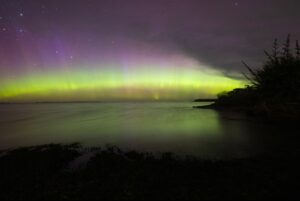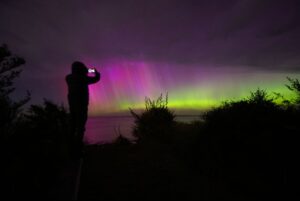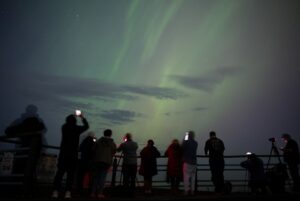For those of you who haven’t been bombarded with photos and videos on social media today, the Northern Lights put on a dazzling display on Friday night.
For thousands of people across the US, UK, and Europe, it was the first time they had ever witnessed the Northern Lights – also known as aurora borealis.

The phenomenon was the result of one of the strongest geomagnetic storms for years hitting the Earth.
When charged light particles from the Sun collide with our planet’s atmospheric gases, they energize atoms and molecules, causing them to emit light.
The distinct colors of the aurora are a result of different gases in the Earth’s atmosphere being energized by the incoming charged particles. Nitrogen and oxygen are the two most abundant gases in the atmosphere, with oxygen atoms emitting predominantly green light – the most common color observed in the Northern Lights.

Nitrogen atoms, on the other hand, emit hues of purple, blue, and pink.
In the US, the lights were visible as far south as Alabama and northern California, while in Europe, countries like Austria, Germany, Slovakia, Switzerland, Denmark, and Poland were treated to the awe-inspiring sight.

But don’t worry if you missed Friday night’s spectacular, because experts are hopeful that the aurora borealis will be visible on Saturday night (May 11) into Sunday morning.





